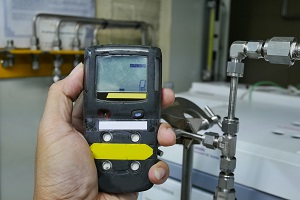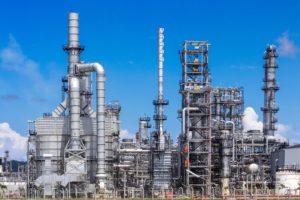Of all occupational hazards, gases are considered silent killers. You can’t see, feel, or sometimes smell them, but they’re lurking around in the workplace. These substances endanger your employees, causing injuries, illnesses, and even accidental death.

The following industries are among those that face hazardous exposure every day:
Mining and Quarrying
While naturally occurring gases are essential to life, some can quickly rob you of yours. These substances are typically found underground, and they’re one of the deadliest occupational hazards for miners and metalworkers. When inhaled, they cause asphyxia and chronic respiratory illness. Some are even flammable and explode when exposed to high temperatures.
In excavation sites, methane (CH4) and hydrogen sulfide (H2S) are notable hazards. They’re highly combustible, and most fires and coal mine explosions result from their ignition. These have been the leading cause of death for thousands of workers throughout the history of mining.
Chemical Refining
Oils pressed or extracted from plants and other sources are refined before industrial use, such as cosmetic or pharmaceutical applications. Contaminants like free fatty acids, pro-oxidants, and phosphatides must be removed to make the final product safe for human consumption.
To do this, the industry uses an array of chemicals like ammonia (NH3) and chlorine (Cl2). As toxic gases, their levels must be kept to a minimum to protect workers. NH3 and Cl2 react explosively when combined with certain substances.
You may initially smell these fumes inside the facility, but prolonged exposure dulls your ability to perceive their odor. Gas leak detection equipment is useful in these conditions since they monitor the air composition and warn you as soon as chemicals reach toxic levels.
Pulp and Paper
Like in mining and quarrying, methane and hydrogen sulfide are the main gases of concern when making pulp and paper. The process involves breaking down lignin, the glue that holds these products together. The chemical reaction releases CH4 and large amounts of H2S, which become health hazards when not handled properly. Exposure to high concentrations lowers the oxygen level in the blood, causing asphyxia or suffocation that leads to unconsciousness, pulmonary injury, or death.
Automotive

Automotive facilities include labs for research and development and environmental chambers for engine testing. If these aren’t monitored properly, harmful gases easily build up in them. Substances like sulfur dioxide (SO2) and nitric oxide (NO) will accumulate as they’re emitted from the combustion of hydrocarbon fuels. They become a hazard to workers when mixed in the air.
Exposure to SO2 and NO may cause severe chemical burns; and, if they come in contact with the eyes, a person can suffer from loss of vision. Other adverse effects range from headaches, tiredness, and general discomfort to fluid buildup in the lungs, swelling of the upper respiratory tract, and even death.
Food and Beverage
Food and beverage companies may not cross your mind when talking about industries that have to face hazardous gases. But, it’s common for factories and processing plants to have certain amounts of carbon dioxide (CO2). These come from dry ice or leavening agents like yeast. They’re also used to add carbonation to water or soda.
This chemical compound won’t poison you when mixed with food, but it can be dangerous when inhaled in high concentrations. It may suffocate workers and elevate their blood pressure.
If you’re constantly working with or exposed to toxic substances, it’s crucial to be proactive about your employees’ health. Provide them with personal protective equipment, invest in gas detection monitors, and always comply with OSHA standards. These precautionary measures don’t only save lives but keep your processes efficient as well. Get in touch with DOD Technologies, Inc. to learn more about how to detect invisible hazards in the workplace.






